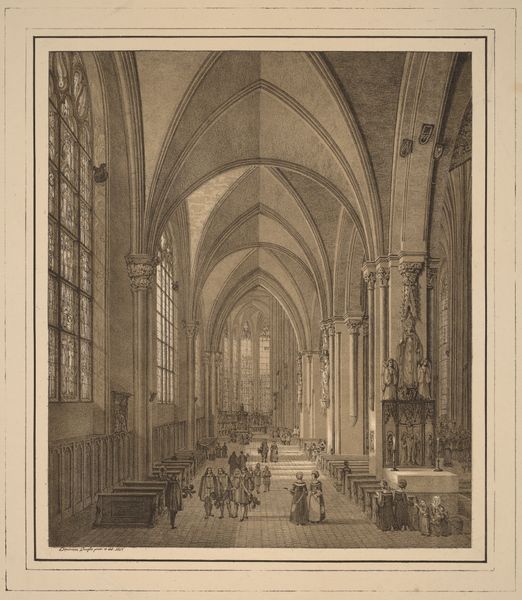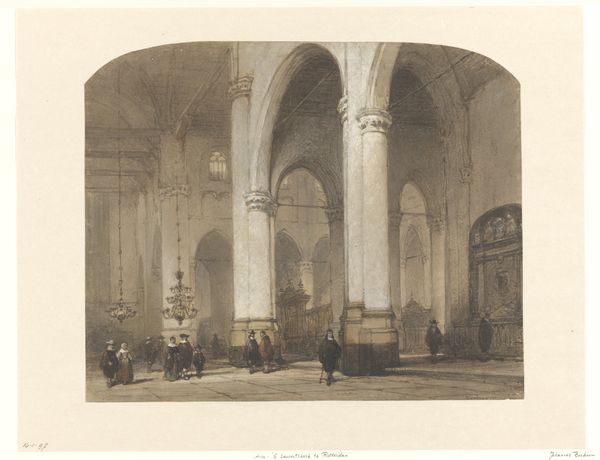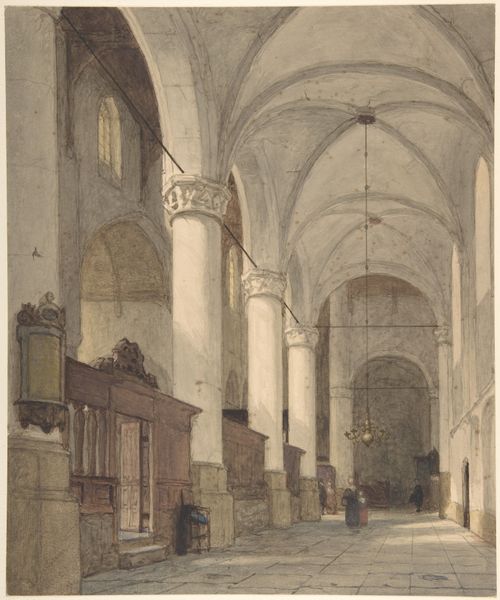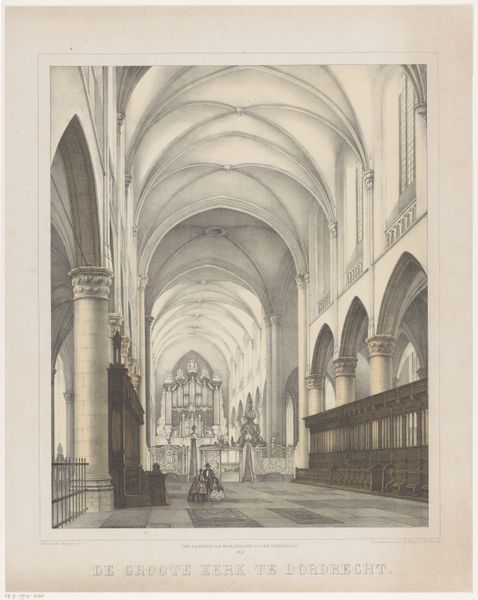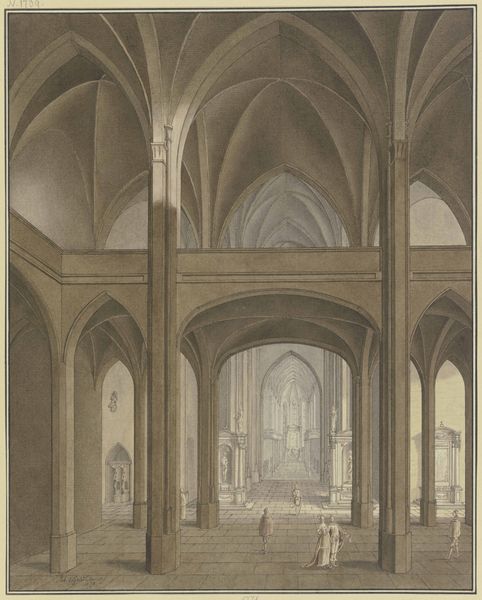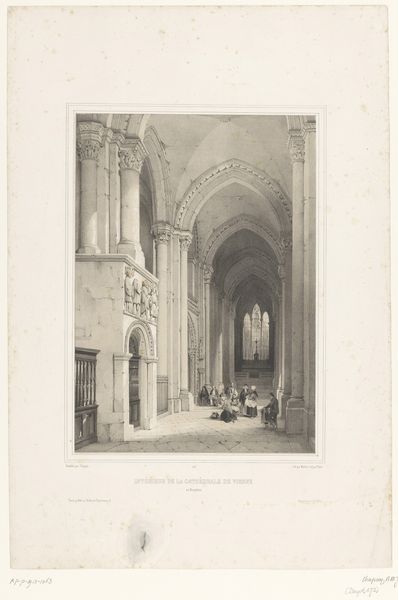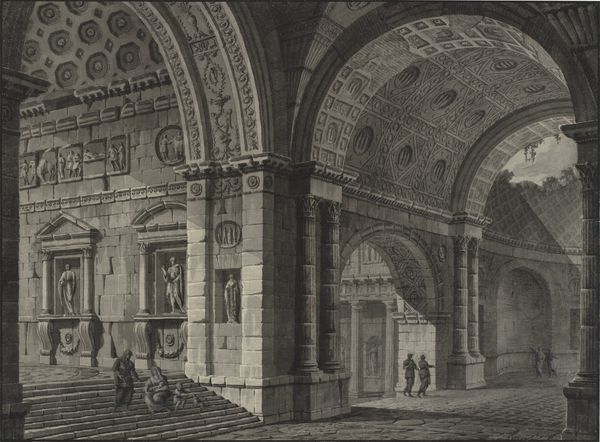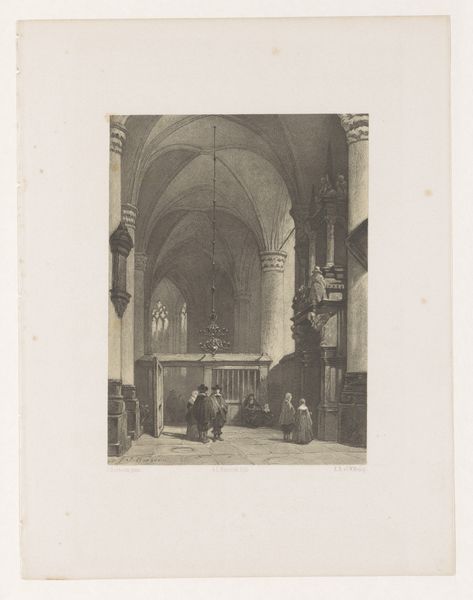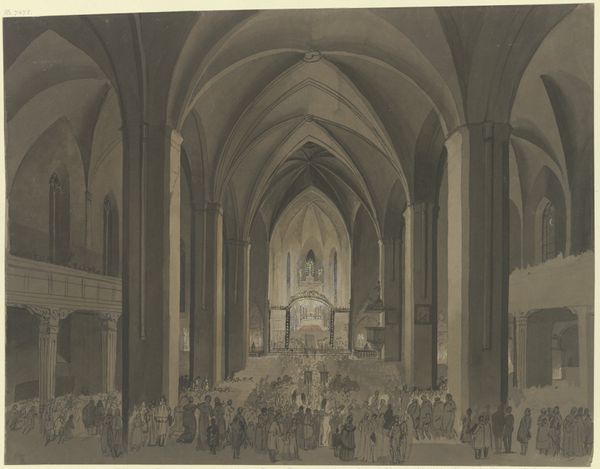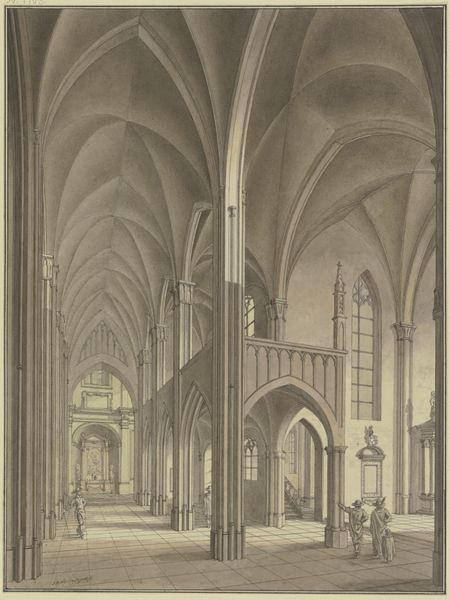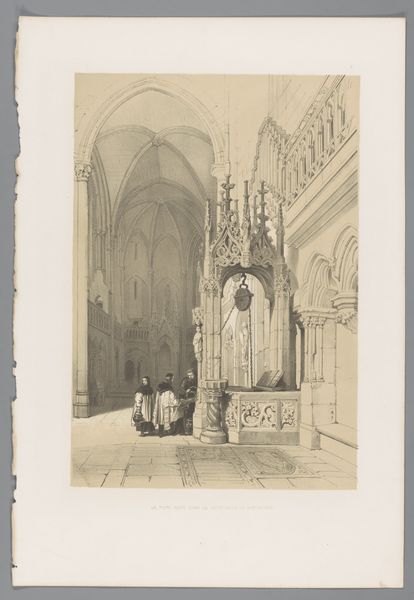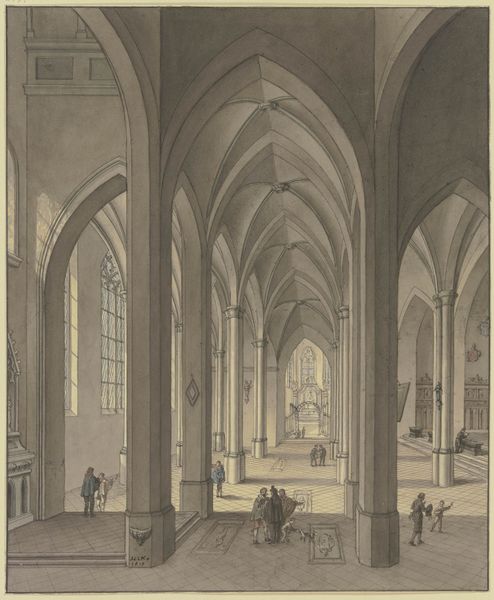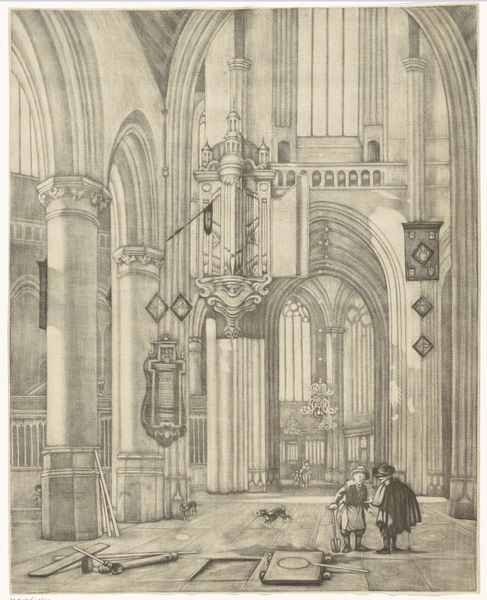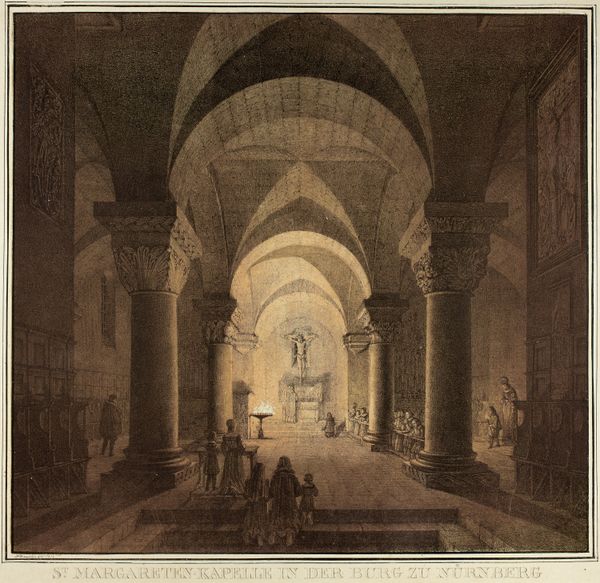
Interieur van de Onze-Lieve-Vrouwekathedraal in Doornik 1829 - 1916
0:00
0:00
drawing, print, pen, engraving, architecture
#
pencil drawn
#
drawing
# print
#
landscape
#
pencil drawing
#
line
#
pen
#
cityscape
#
engraving
#
architecture
#
realism
Dimensions: height 529 mm, width 377 mm
Copyright: Rijks Museum: Open Domain
François Stroobant created this print of the interior of the Onze-Lieve-Vrouwekathedraal in Doornik, employing techniques of lithography, a process that democratized image-making in the 19th century. The lithographic process, which involves drawing on a stone or metal plate with a greasy substance and then using ink to create a print, allowed for a high level of detail. Look closely, and you’ll see the textures of the stone and the atmospheric effects of light filtering through the cathedral’s vast space, achieved through careful gradations of tone. Lithography enabled artists like Stroobant to reproduce complex architectural scenes efficiently. This print, like many others of its time, was produced not only as a work of art but also as a commodity. It would have been acquired by individuals eager to possess a tangible piece of cultural heritage, thus tying the sacred space of the cathedral to the emerging culture of mass production and consumption. Paying attention to the conditions of the print's making, distribution, and reception, offers insight into its historical meaning and social context.
Comments
No comments
Be the first to comment and join the conversation on the ultimate creative platform.
